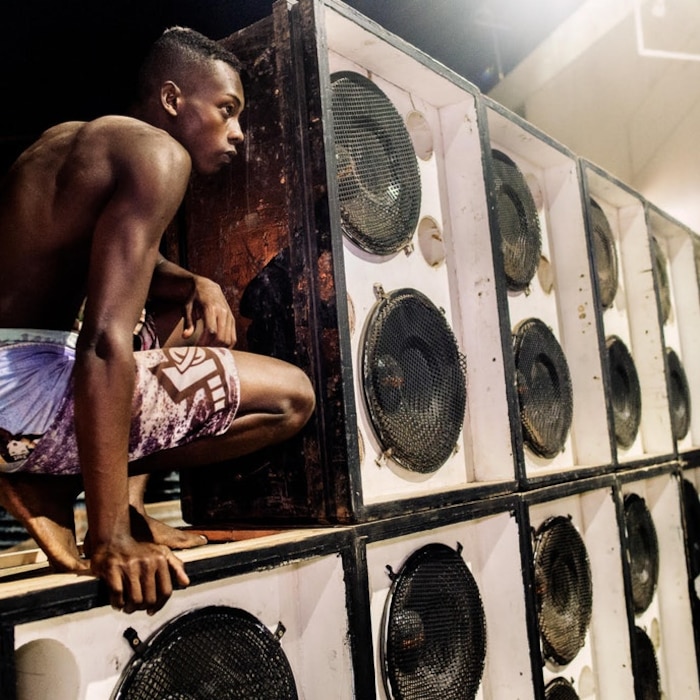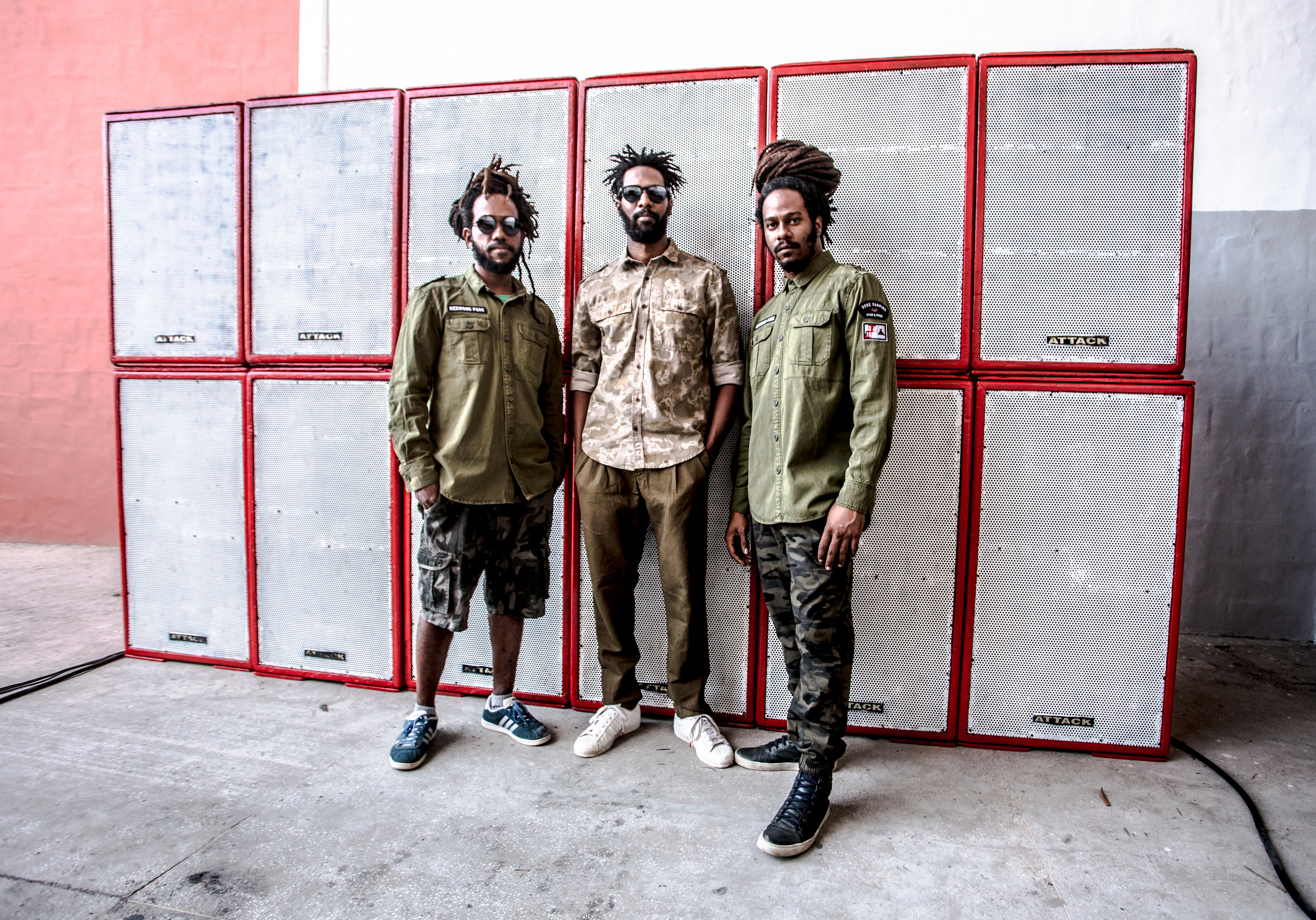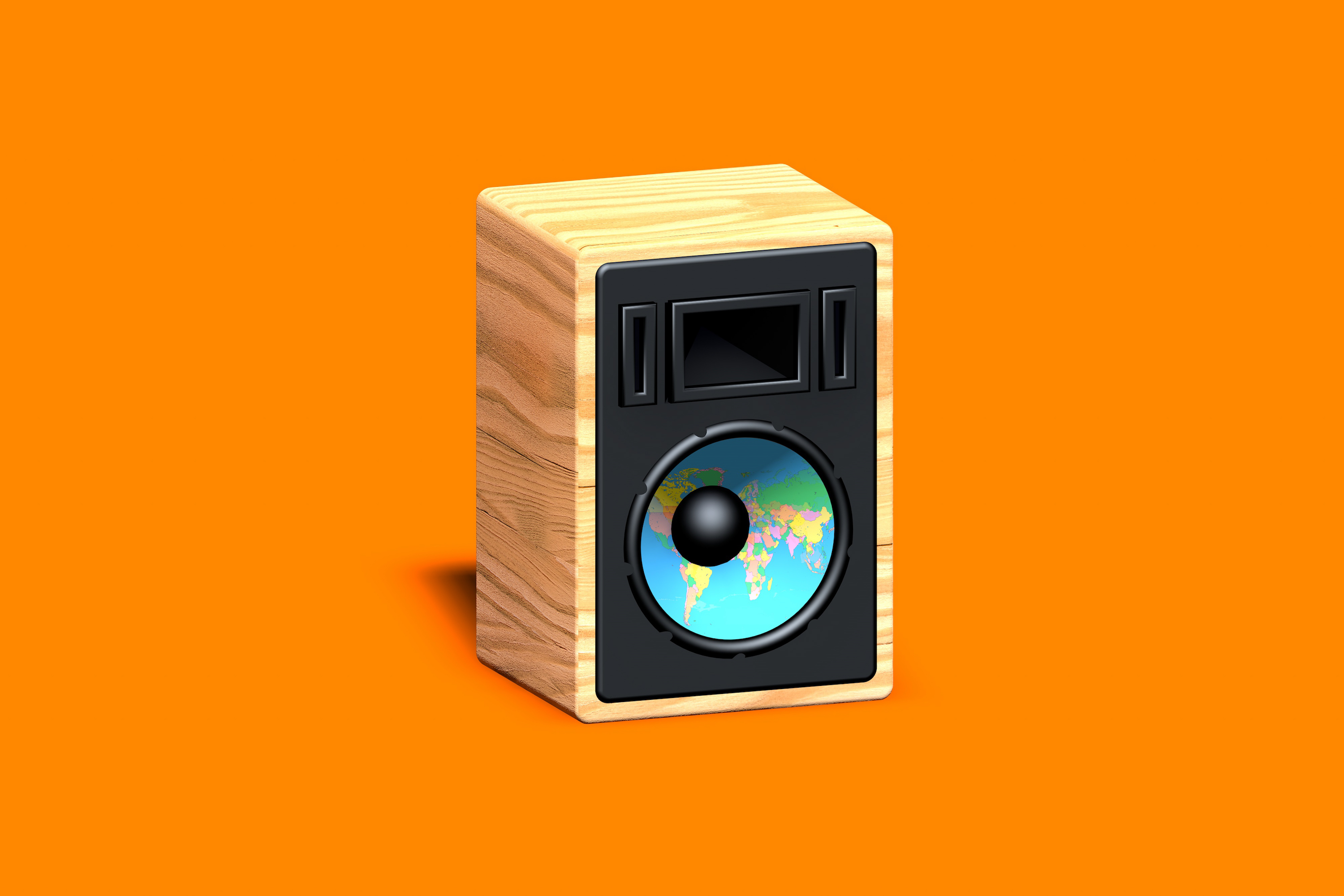Baile de Favela: Vincent Rosenblatt on the Cultural and Political Reverberations of Brazil’s Soundsystems
Vivian Host catches up with the Rio-based photographer to discuss his work capturing the energy of baile funk and tecno brega

Brazil’s soundsystem culture has been rocking nearly as long as Jamaica’s, and the sheer area of the world’s fifth largest country means sounds have evolved very distinctly in different parts of the country: Rio de Janeiro and São Paulo and Salvador and the Amazon basin. Rio-based photographer Vincent Rosenblatt has dedicated nearly two decades of his life to documenting the vibrancy, energy and individuality of these Brazilian soundsystems – not only the speaker stacks, but the people who build them and DJ on them, and the community of partygoers who feverishly take part in the culture. Possessed by the 808 bass and insistent tamborzão (the famous “tum-pá-pá-pum-pá-pá” rhythm) rattling his Rio apartment, Rosenblatt gained entry into the world of the baile funk, the dances in which the stripped-back, high-octane and favela-born style known as Brazilian funk (or sometimes funk carioca) flourishes.
Photographing the baile funk became Rosenblatt’s obsession, and through this journey he also discovered the world of the bate-bola – Rio’s underground (and funk-driven) carnival – and tecno brega, a Northern Brazilian evolution of soundsystem music and culture centered around the city of Belém do Pará, the gateway to the Lower Amazon. In this edited excerpt from his interview with Vivian Host on Red Bull Radio’s Peak Time, Rosenblatt discusses the unique force of the funk and tecno brega scenes: the creativity, individuality and the way the music and culture provides hope and sustenance in a repressive environment.
How did you first arrive in Brazil?
I first arrived in 1999 thanks to an exchange program through the National High School of Fine Arts in Paris. It’s a public school but we were very spoiled and each student had the opportunity to do an exchange program somewhere in the world. I remember [going to] a Brazilian movie festival in Paris and seeing all the Cinema Novo, all the classics from Brazilian cinema, and this led me to apply for the exchange program in Brazil.
In 1999, Brazil was a social laboratory; there was much more hope in the favelas, in the Amazon and in the land rights movement. Things like that were very exciting and instead of staying three months, I ended up staying nine months, going to a lot of places by bus, crossing the country and getting in touch with the Brazilian complexity, reality and its conflicts.
I ended coming back after graduating and started a youth media project that trained young photographers to be able to publish their work and sell it to collectors so that they could buy their own cameras and make their own work. We did that for six years. In the middle of this process, I encountered the subjects that would capture my interest for many, many years: namely baile funk, the tecno brega in Belém do Pará, and the underground and unknown carnival of the Bate-bola (also in Rio) which is deeply connected to baile funk. And here I am, 17 years later, still here.
The bass and the beats were so strong that the walls of the house were shivering.
When did you first hear baile funk and how did you end up going to your first baile funk party?
My first real contact with baile funk was from my window. The hill in front of Santa Teresa, the neighborhood where I used to live then, was hosting one of the hundreds of baile funk [parties] that were happening in the city at the time. The bass and the beats were so strong that the walls of the house were shivering and the lyrics were so extraordinary, speaking the truth of the city, the real conflicts. It was epic. You could hear about all important matters in the middle of the baile and from my window, I was attracted to it.
I had no contact to this favela and you have to remember the people that photograph in the favela in Brazil, in Rio, are always associated with the bourgeois press and police collaboration, so it’s really an issue to find space for photography in a positive way in the favela. Even more so in the baile funk, which was always subject to a lot of hate and contempt from the elite as well as repression from the military police.
But one day I took a cab and went far into the west zone of Rio, in the favela which is dominated by a military militia, and asked to meet the organizers of the baile. One of them was very nice and let me enter the baile and photograph it. From the first moment, seeing this energy, the beauty and the power of the youth there, I felt that this would occupy and interest me for a very long time.
The year was 2005, and back then it was so unusual to have a photographer [in that space], so I had these MCs and DJs inviting me to their favelas, introducing me to the local authorities (who were usually drug lords or paramilitaries) and risking their lives to say, “This guy’s trustworthy, please let him do his work and take pictures, nothing bad will happen.”
A lot of your photos are of these amazing soundsystems. Can you talk a little bit about the Rio soundsystems in particular? Do you have any sense of how many baile funk soundsystems there are?
During the golden era of baile funk, around ten years ago, I think there were about 50 soundsystems or more, from small to giant ones and it was such a rich scene that each weekend the big question was where to go. But now I think there are around a dozen bailes happening in [Rio] and this is a consequence of repression. The mythic soundsystems from ten years ago are gone or they are not showing themselves as much as they used to.
Funk music, however, is more alive than ever. You can hear it in the cars everywhere, on YouTube. The artists are there but the flourishing party scene is a shadow of what it once was. The soundsystems were handmade by specialist artisans from the suburbs. They were competing, not so much visually, but for loudness and sound intensity.
In Rio, the boxes are mounted horizontally, which is solely meant for bass. When you go to the Amazon, they are vertical because the people from the Amazon are much more interested in the melody than the beats. They have a different feeling and a different taste for music and this is reflected in their soundsystems.
It’s so interesting the way that different soundsystems evolve for different purposes. I know that a lot of funk music migrated to São Paulo and they have mobile funk parties – the fluxos – because the police are always breaking them up. So often times the soundsystems are in cars, anything from motorcycles to flatbed trucks.
Yes, and they’re very noisy. You have this in São Paulo but it’s an influence from the northwest of Brazil. From Salvador to Belém you already had this style of mobile soundsystems where they meet in the middle somewhere and throw a big, giant party with all the cars and trucks. They tried to destroy the source of it, but funk is ruling the country and it’s modified in each state and city with the local culture.
You mentioned before the funk music reflecting lyrically the issues that are of concern to young people in Brazil. What sort of issues are these? Is there a difference in what people were talking about back when you first started hearing it, as opposed to what is in the music today?
One of two main funk styles at the time was proibidão, the forbidden one, which was about all the conflicts between the police and the drug lords and militias. This was sung in a very epic way by some of the most poetic and powerful MCs at the time, and it was also the most depressing part of the funk. Some of the best MCs spent time in jail, and regularly their freedom of speech was questioned. The police would not arrest the drug dealers or stop getting money from them, but the MCs saying the truth were always subject to high repression.
The other funk style is putaria, or the sex songs, and there you have all the gender issues. This was less censored because it’s not directly questioning the authorities. For people that never have been to the baile funk, hearing it from the outside, they take the lyrics as fact when in reality, nothing as such happens in the baile. There is absolute respect for the ladies, especially in the favelas where no one would approach a woman without being invited and without checking if she already has a partner.
At the climax of the baile you see a whole community celebrating and dancing together and renewing the link, the bond of the whole favela.
What would people see in a baile funk party that they wouldn’t just see in a normal club?
In a favela baile funk, you see that it’s not just about entertainment, it’s not just about dancing – it’s a big event for the community. It’s a moment where everyone is together, dancing and expressing all these issues through song: gender relationships, relationships with the authorities. It’s a moment of updating everyone and it’s a celebration of an identity. And also, another important aspect is that it is a moment for dozens of families to sell drinks, fries, food, whatever. It’s an expression of the local economy.
At the climax of the baile in the middle of the night, you see a whole community celebrating and dancing together and renewing the link, the bond of the whole favela. It’s a very intense type of energy.
A lot of your work shooting these baile funk parties in Rio shows all of the wild looks and the very personalized fashion that people obviously work really hard on. What are some of the craziest fashions that you’ve seen in a baile?
The fashion has changed a lot over the years. Something that gives me hope is that within the last five years there’s been a revolution from the Afro-Brazilian youth. They are winning the war against racism by wearing their Afro hair – for decades people were hiding or straightening their hair to make it look like European hair.
There is a silent but very visible revolution everywhere in the favelas regarding the freedom to be yourself, and loving yourself goes together with fashion. Another point of hope is some new parties (Batekoo & Yolo Love Party) outside the favelas in the suburbs that are made by young producers, who were very often born in the favela. They are creating safe spaces where everyone can dance together, all tribes are welcome, straight or queer, and everywhere in between.
You have a young generation which is much more aware of their culture and of the power that they have in trying to create a space where you can be yourself in your own country without suffering resistance or risking being killed by the police just because you are black.
You mentioned the soundsystems of the Amazon and I’m curious to know more about tecno brega, which is another scene that you’ve been documenting.
Yes, it’s a huge, huge scene which evolved separately from baile funk. It’s very little-known, even inside Brazil, but since the ’60s, you have families traveling with soundsystems from the suburbs of Belém do Pará, which is the capital of the Amazon state of Pará, to the riversides and the neighboring states with incredible equipment. They were bringing nightclub-style parties to the villages through trucks and boats. This a tradition which started decades ago with completely different music. It was very romantic music, for couples to dance to, but then around the year 2000, personal computers arrived and then the first samplers and then the music changed.
There is a lot of influence from global pop music. What they do is, for example, take a hit from Beyoncé, Rihanna and the others, not understanding the lyrics, but take the music and sing something over it with their own rhythm. There is a new music economy that arose from Belém do Pará based on piracy; people selling CDs in the streets (CDs that are many times recorded live at the parties) and circulating them through all the states.
The machines of the soundsystems evolved and there was a time in the early 2000s when they looked like spaceships. Then we went through a time of totemic animals. You had the buffalo, which is the main animal from the island of Marajo. You had the crocodile or crocodilo, which is very common in the Amazon. You also had the fire eagle from the Amazon which was the most beloved machine and the DJs were treated like demigods. The DJ teams from each big machine would fight for the love of the public.
You have several generations of people from the suburbs and the local favelas that made their life through these parties. People from the periphery, from the indigenous regions mixed with black and white. It’s not the elite. The elites, like in Rio, hate its content, but the difference is that the local government never really forbade it or had the strength needed to do so.
It’s a giant local music cultural economy but completely underground at the same time. You won’t find it on iTunes or Spotify, it’s completely locally made and ignored by the rest of the country. The rest of the country could not imagine such modern contemporary technology involved in that region’s music scene.

